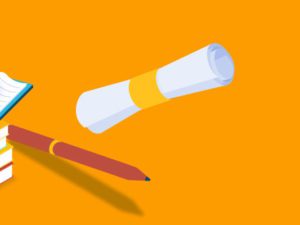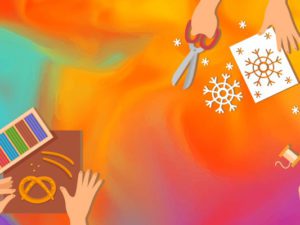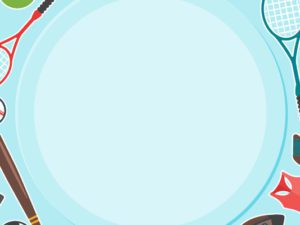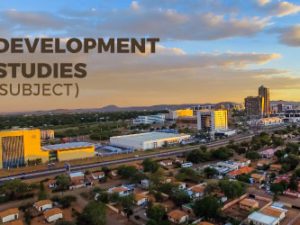ART & DESIGN SYLLABUS
- Description
- Curriculum
- Reviews
Art and Design complements all academic and practical subjects in the senior secondary school curriculum. The programme seeks to develop good work attitudes and values. On completion of the course programme, students are expected to have developed adequate literacy and practical skills to enable them to face the challenges of further education and the world of work.
It is hoped that the two-year secondary art and design course will enrich students understanding of Art and Design as a means of visual and creative communication. The syllabus is designed to encourage students to express original ideas; imagination, sensivity, conceptual thinking and powers of observation. The Senior Secondary art course should lead to a greater understanding of Botswana’s arts and culture in relation to the global community.
Rationale
The Botswana Secondary Syllabus in Art and Design is designed as a two-year course at post Junior Secondary level. It expected that all students taking this course will have sat for the 3 year Junior Certificate in Art.
The art programme is offered as one of the options in the Creative Technical and Vocational group. According to policy, all students are required to choose a minimum of one subject from this option group.
Aims of Senior Secondary Programme
On completion of the two year secondary programme learners should have: –
- acquired knowledge, developed confidence and ability to assess their personal strengths and weaknesses and be realistic in choosing appropriate career/employment opportunities and/or further education and training.
- developed skills to assist them in solving technical and technological problems as they relate to day-to-day life situations.
- developed desirable attitudes and behavioural patterns in interacting with the environment in a manner that is protective, preserving and nurturing.
- acquired attitudes and values, developed basic skills and understanding to allow for execution of rights and responsibilities as good citizens of Botswana and the world.
- developed information technology skills as well as an understanding and appreciation of their influence in day-to-day activities.
- acquired knowledge, attitudes and practices that will ensure good family and health practices, including awareness and management of epidemics (such as HIV/AIDS), that prepare them for productive life.
- developed pre-vocational knowledge and manipulative skills that will enable them to apply content learnt and attitudes and values developed to practical life situations in the world of work.
- developed an understanding of and acquired basic skills in business, everyday commercial transactions and entrepreneurship.
- developed foundation skills such as problem solving, critical thinking, communication, inquiring, team work / interpersonal to help them to be productive and adaptive to survive in a changing environment.
Aims of Senior Secondary Art Programme
The aims below are not listed in order of priority.
The aims are stimulate, develop and, or encourage:
- an interest in and critical awareness of environments and cultures
- an ability to identify and solve problems in visual and tactile form
- confidence, enthusiasm and a sense of achievement in the practice of Art and Design
- the technical competence and manipulative skills necessary to form, compose and communicate in two and three dimensions.
- an ability to record from direct observation and personal experience
- the acquisition of a relevant working vocabulary
- experimentation and innovation through the inventive use of materials and emerging technologies.
- the ability to organise abstract ideas to practical outcomes.
- intuitive and imaginative responses showing critical and analytical skills.
- awareness of the quality of skills, knowledge and self-reliance required for art related careers and industry.
Recommended teaching methods
The syllabus encourages a learner-centred approach as emphasised in the Curriculum Blueprint. The course lays emphasis on practical art skills involving the processes of designing and making. They are inherently problem solving skills, which are designed to increase the inquisitiveness of the students. The nature of art and design means that it is taught as a mixed ability subject allowing students with special needs and differing abilities to find their own strengths through a learner centred approach to the subject by the art teacher. The local environment should be used to provide context to the syllabus.
Teachers should approach the teacher – learning process in a pupil centred way. Art Teachers should use a variety of methods to assist students to reach the syllabus aims in art and design. The teaching use demonstrations, practical work, project work, Discussions, field trips, CAD, visual aides, illustrations, photography, examples of fine art and crafts.
Ideally for this syllabus to be taught effectively, all art departments need specialist working areas and specialist equipment for each of the specialist processes.
Domains of Art and Design
The Domains in Art and Design are grouped under the following heading:
Knowledge with Understanding, Interpretative and Creative Response, Personal Investigation and Development.
knowledge with understanding
Students should be able to:
1.1 recognise and render form and structure;
1.2 appreciate space and spatial relationships in two and three dimensions and understand space in terms of pictorial organisation;
1.3 use chosen media competently, showing clarity of intention and be able to explore surface qualities;
1.4 handle tone and/or colour in a controlled and intentional manner;
Interpretative and Creative Response
Students should be able to:
2.1. express ideas visually;
2.2. respond in an individual an personal way;
2.3 demonstrate quality of ideas as seen by interpretation rather than literal description of a theme;
2.4 make aesthetic judgements;
Personal Investigation and Development
Students should be able to:
3.1 impress with personal vision and commitment, and make purposeful movement towards maturity;
3.2 research appropriate resources;
3.3 assess a design problem and arrive at an appropriate solution;
3.4 show the development of ideas in series of rough layouts or experiments which lead to a final solution;
Curriculum Content
The syllabus is intended to make student’s aware of the changes in today’s ever developing world of technology, whilst at the same time maintaining an appreciation of Botswana’s culture. The syllabus encourages learners to explore ideas, materials, skills and responses required to address environmental, social, political and cultural issues in their daily lives. The course is designed to provide continuity from the 3 year JC art programme to enable art students to develop to a more sophisticated level of learning and understanding at the senior secondary level.
-
5Painting And DrawingText lesson
-
6Design Studies 1Text lesson
-
7PhotographyText lesson
-
8Critical and Historical StudiesText lesson
-
93D Design StudiesText lesson
-
10AssessmentText lesson
-
11COMPONENT 1 OBSERVATION STUDYText lesson
-
12COMPONENT 2 INTERPRETATIVE STUDYText lesson
-
13COMPONENT 3 DESIGN STUDYText lesson
-
14COMPONENT 4 CRITICAL AND HISTORICAL STUDIESText lesson
-
15COMPONENT 4 – 8 COURSEWORK STUDIESText lesson

Popular Subjects
Working hours
| Monday | 9:30 am - 6.00 pm |
| Tuesday | 9:30 am - 6.00 pm |
| Wednesday | 9:30 am - 6.00 pm |
| Thursday | 9:30 am - 6.00 pm |
| Friday | 9:30 am - 5.00 pm |
| Saturday | Closed |
| Sunday | Closed |
About
The Most Secure & Collaborative Learning Platform.
Classmate is an Inclusive, Social E-Learning platform, for students and educators to access educational content and promote collaborative learning.
The solution has been developed after making an assessment that there is a need for students to interact outside the classroom yet enjoying the classroom set up with the additional freedom of engagement
Popular Subjects











